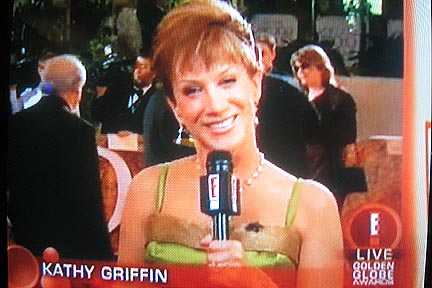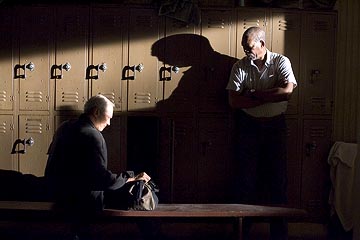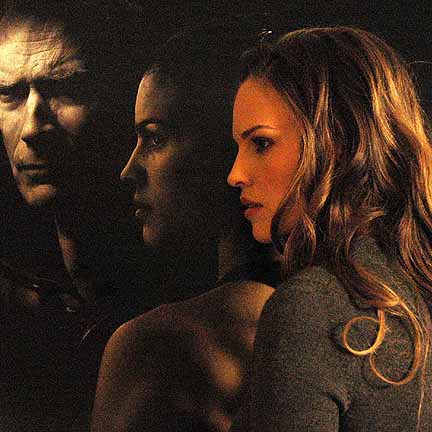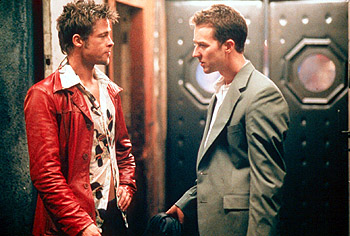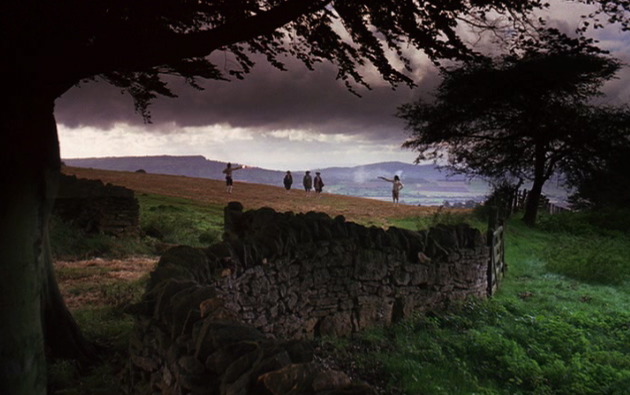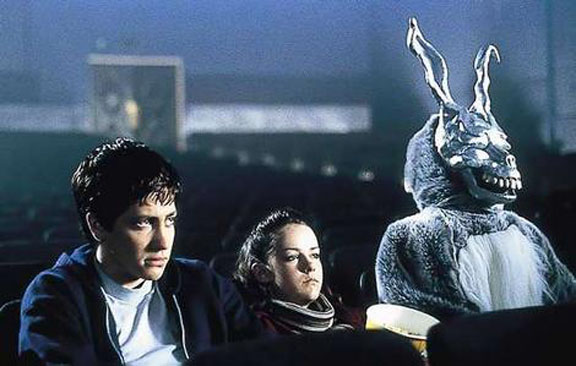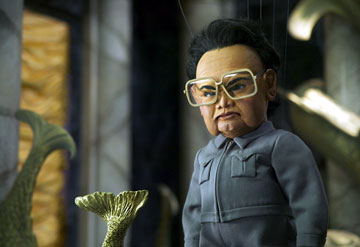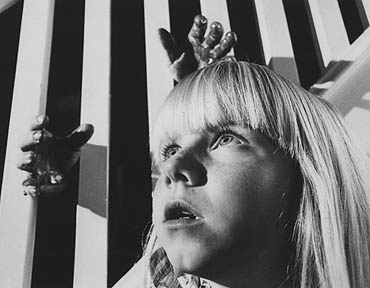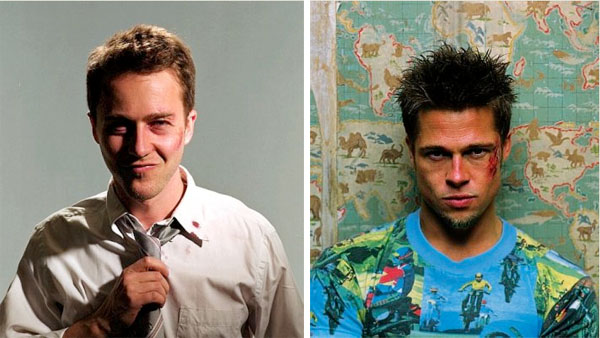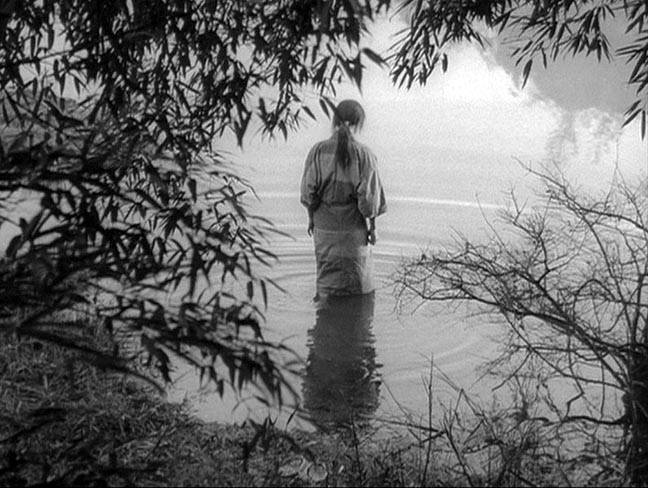Scanners
For the Love of Film Blogathon: Feb. 14-21
The For the Love of Film Blogathon (co-hosted by Ferdy on Films and Self-Styled Siren to benefit the National Film Preservation Foundation) has already inspired Greg Ferrara at Cinema Styles to come up with these two groovy announcements. I hope I can think up something worthy of contribution — but meanwhile I’m certainly going to be soaking up all the terrific stuff that’s come flooding in…
P.S. Anybody remember when the Scherzo from Beethoven’s Ninth (used in the montage above) served as the theme for NBC’s nightly newscast, the “Huntley-Brinkley Report” with Chet Huntley and David Brinkley? Arturo Toscanini conducting the NBC Orchestra, of course. “Good night, Chet. Good night, David. And good night for NBC News.”
The Uncertainty Principle (or, The Easy Read)
Son (Michael Shannon). Opening shot: “Shotgun Stories.”
In Sally Potter’s “Yes,” there’s a scene in a restaurant kitchen in which a Lebanese chef and a young Brit-punk dishwasher get into fierce confrontation (you can’t really call it an “argument”) over politics and religion. The kid grabs a frying pan and goes after the chef. The chef picks up a knife. Standoff. The manager arrives. Summarily, he fires the chef.
In the Q & A after the screening at Ebertfest, some people said they thought this was clearly a race-based (or racist) decision on the manager’s part. Others debated the choice of weapons: Didn’t a knife appear more threatening than a pan?
He (Simon Abkarian), “Yes.”
Back up two weeks to the Cinema Interruptus series of screenings at the Conference on World Affairs in Boulder, CO: We’re looking at the scene in “No Country for Old Men” in which Sheriff Ed Tom Bell returns to the scene of the crime at the motel. [Spoiler alert — although why you would be reading this blog if you haven’t seen “NCFM” is beyond me.] The way the scene is constructed, we expect Chigurh to be standing behind the door when Ed Tom enters the room. The door opens flat against the wall. Ed Tom steps over a pool of dried blood in the doorway, looks around the room, checks the bathroom window (which is locked from the inside) and, relieved, sits down on the bed. He notices an air vent that has been removed. Four screws and a dime are on the floor.
What more do you need to know? I’m not saying it’s unreasonable to want to know. But take a moment to look before you start jumping to conclusions. What is there and what is not there. Does the movie provide the answer(s) to your questions, or does it not? If not, what does that decision tell you? That the Coens are sloppy or forgetful? That they’re interested in something else, like the experience Ed Tom has just gone through? That maybe you’re asking the wrong questions? What else?
50 greatest music films ever
Barbie as Karen in “Superstar.”
Maybe there should just be a category in the right column for “Lists.” Here’s one from the film and music writers of Time Out London (which will always be the only real Time Out) called “50 greatest music films ever except for ‘Spinal Tap’.” No, I added those last four words, but the editors explain in their intro that “we’re celebrating great films – dramas and documentaries – about real musicians.”
As if David St. Hubbins and Nigel Tufnel and Derek Smalls never actually toured in the flesh? As if they aren’t at least as “real” as, say, KISS or the Monkees or Hootie and the Blowfish, which contained no one named “Hootie” and nobody named “Blowfish.” (BTW, the Ramones weren’t really “Ramones”! Those were just stage names!) Oh, and Gus Van Sant’s “Last Days” was about a guy named “Blake.” Michael Pitt looked like Kurt Cobain, but it was only about Cobain in the sense that “Velvet Goldmine” is about Bowie or Iggy Pop or Lou Reed, or “Grace of My Heart” is about Carole King or Brian Wilson or any of the Brill Building writers (even though a lot of them wrote songs for the movie). Then there’s “‘Round Midnight” (which is on the list) with Dexter Gordon playing Dale Turner, a fictionalized version of Bud Powell…
View image Downey, CA: “What happened?” Third shot of “Superstar.” Compare to second shot of “Zodiac” — establishing a neighborhood, from a car on the street…
So, OK: No “Spinal Tap.” But no “I Am Trying to Break Your Heart: A Film About Wilco”? No “You’re Gonna Miss Me: A Film About Roky Erickson”? No “Thelonious Monk: Straight, No Chaser”? No “X: The Unheard Music”? No “The Girl Can’t Help It”? No “Wattstax”? No “Woodstock”? No “The Kids are Alright”? No “No Direction Home”? No “The Buddy Holly Story”? No “Theramin: An Electronic Odyssey”? No “Heart of Gold”? No “The Filth and the Fury”? No “We Jam Econo: The Story of the Minutemen”? No “La Bamba”? No “Kurt and Courtney”? See how much fun this is? Really, though, I’d substitute any of these for several of the selections on the list.
But, OK, many of my favorites are included: “24 Hour Party People,” “Jazz on a Summer’s Day,” “Stop Making Sense,” “DIG!,” “Art Pepper: Notes from a Jazz Survivor” (his autobiography, “Straight Life,” is the best account of addiction I’ve ever read), “The Decline of Western Civilization Parts I and II (The Metal Years)”…
View image No one here gets out alive.
At the toppermost of the poppermost: Todd Haynes’ 1987 “Superstar: The Karen Carpenter Story,” a 45-minute lo-fi “dramatization” that was never officially released because of music clearance troubles (that is, brother Richard wouldn’t let Haynes use any Carpenters tunes). Still, after 20 years as an “underground” item, it’s available from Google Video here. It’s something you really need to see: a documentary-style biopic of Karen Carpenter performed mostly by Barbie dolls. Yes, its a parody (so are most musical biopics, including others on the list — see the upcoming Jake Kasdan/Judd Apatow picture, “Walk Hard: The Dewey Cox Story” for more on that score). But it presents straightforward facts about anorexia that could have been excerpted from any PBS or 16mm educational doc of the period. It’s also a formula showbiz melodrama. But for all the layers of artifice, like Haynes’ Sirk opera “Far from Heaven,” it becomes strangely, hypnotically — and genuinely — moving. Prepare yourself for Haynes’ Dylan fantasia, “I’m Not There,” by watching “Superstar” and “Velvet Goldmine.”
ASIDE: From an interview with Haynes at The Reeler:
I actually think that it’s easier for people who know less about Dylan to go with it, if they’re up for something different. Clearly, that’s the first thing: Whether you know Dylan or not, you have to surrender to the movie to have a good time at all and get anything out of it. If you have a lot of Dylanisms in your head, it’s kind of distracting, because you’re sitting there with a whole second movie going on. You’re annotating it as you go. It’s kind of nice to sit back and let it take you. I think people get it: Even if you don’t know which are the true facts and which are the fictional things, and when we’re playing with fact and fiction, from the tone of it, you know that it’s playing around with real life. In a way, that’s what biopics always do. They just don’t tell you that they’re doing it, and they don’t make it part of the fun. You have to follow the Johnny Cash story and just sort of think, “This is what really happened.” Of course, you know it’s being dramatized, but you’re not in on the joke. You’re not in on the game of that. In this movie, at least, you get tipped off to it.Oh yeah, but about that list. Here it is. Make of it what you will:
1 “Superstar: the Karen Carpenter Story” (Todd Haynes, 1987)
2 “Don’t Look Back” (DA Pennebaker, 1967) — Bob Dylan
3 “Gimme Shelter” (David Maysles/Albert Maysles/Charlotte Zwerin, 1970) –Rolling Stones
4 “24 Hour Party People” (Michael Winterbottom, 2002) — Manchester scene
5 “Topsy-Turvy” (Mike Leigh, 1999) — Gilbert and Sullivan
6 “Monterey Pop” (DA Pennebaker, 1968) — concert
7 “Be Here to Love Me” (Margaret Brown, 2004) — Townes Van Zandt
8 “Thirty Two Short Films about Glenn Gould” (Francois Girard, 1993) — Glenn Gould
9 “Cocksucker Blues” (Robert Frank, 1972) — Rolling Stones
10 “Bird” (Clint Eastwood, 1988) — Charlie Parker
11 “The Last Waltz” (Martin Scorsese, 1978) — The Band & Friends farewell concert
12 “Rude Boy” (Jack Hazan, David Mingay, 1980) — The Clash
13 “Scott Walker: 30 Century Man” (Stephen Kijak, 2006) — Scott Walker
14 “Bound for Glory” (Hal Ashby, 1976) — Woody Guthrie
15 “The Decline of Western Civilization Parts I & II” (Penelope Spheeris, 1981, 1988) — LA punk; ’80s metal & hair bands
16 “The Devil and Daniel Johnston” (Jeff Feuerzeig, 2005) — Daniel Johnston
17 “Sweet Dreams” (Karel Reisz, 1982) — Patsy Cline
18 “Art Pepper: Notes from a Jazz Survivor” (Don McGlynn, 1982) — Art Pepper
19 “Elgar” (Ken Russell, 1962) — Edward Elgar
20 “Rust Never Sleeps” (Neil Young, 1979) — Neil Young
21 “The Future is Unwritten” (Julien Temple, 2006) — Joe Strummer
22 “DiG!” (Ondi Timoner, 2004) — Brian Jonestown Massacre, Dandy Warhols
23 “Some Kind Of Monster” (Joe Berlinger, Bruce Sinofsky, 2004) — Metallica
24 “A Hard Day’s Night” (Richard Lester, 1964) — The Beatles
25 “Jimi Hendrix” (Joe Boyd, 1973) — Jimi Hendrix(more)
Letter: When theories become fact
From Joe Killin, Lakeland, FL:
I am a nineteen year old college student in Lakeland, Florida, I am a self-proclaimed thinker, and more often than not, I am a fool. I was originally homeschooled as a child by — of course — my mother. I have been brought up as a Christian (a term I hate, by the way), I’ve been educated with Christian cirriculum, but only recently did I decide that I wanted to be a Christian.
I’m sure you have received a multitude of letters on this topic already, but I hope mine stands out because I want to point out some things that I have not seen anyone else point out — namely, things about our culture’s way of educating people.
Kubrick and the cosmic zoom
A mighty zoom. It begins here…
… and ends here.
It’s been said that what “The Shining” is to the dolly/Steadicam shot, “Barry Lyndon” is to the zoom. Jeffrey Bernstein offers an in-depth exploration of all those slow, still-life zooms in “Barry Lyndon” — 36 of them by his count, and I believe him! (Here’s the .pdf file.) I have so much reading to do.
The zoom, because it is purely optical and does not involve actually moving the camera, has unique visual properties. It tends to flatten the image as it enlarges it (I was going to say “gets closer,” but of course that’s the point — it doesn’t). Kubrick uses it so that his characters appear to be locked within the frame, and shots are presented like paintings — portraits or landscapes. It’s part of the canvas of the film, as it were. (BTW, my revised 1981 appreciation of “Barry Lyndon,” one of my favorite films, can be found here: “Barry Lyndon and the Cosmic Wager.”)
Bernstein writes:
In “Barry Lyndon” Kubrick elevates a ‘poor cousin’ as it were of film technique—the zoom in progress—to a central position. In the first twenty-one minutes of the film there are six zooms and one zoom-like track-out. The majority of these zooms are elaborate; the shortest in duration lasts no less than ten seconds, while the fifth (the Nora-Captain Quin love scene) lasts a remarkable thirty-four seconds, and the sixth (the opening of the Barry-Captain Quin duel) lasts thirty seconds. Six of the first eleven scenes in the film, including three scenes in a row, begin with elaborate zoom-outs. The audience can’t help but notice the zooms. Perhaps never before in the history of commercial cinema have zooms been employed to be noticed by the audience. And not only to be noticed, but to be thought about as well. It seems to me that Kubrick’s use of the zoom movement in “Barry Lyndon” is the most elaborate and sustained use of zoom movement ever seen in a film.You’ll get no argument from me! Though Robert Altman and Vilmos Zsigmond do deserve special mention for their work in “McCabe and Mrs. Miller,” “Images” and “The Long Goodbye.” In the latter the camera never stops zooming and moving, as if it were bobbing on the waves at Malibu…
(Yes, those last four words are a Joni Mitchell reference.)
“We can’t stop the dancing chicken!”: Ebertfest photos #2
View image David Bordwell (who needs no introduction to readers of Scanners), Michael Barker of Sony Pictures Classics, and Werner Herzog discuss Herzog’s “Stroszek.”
“Stupidity is the devil. Look in the eye of a chicken and you’ll know. It’s the most horrifying, cannibalistic, and nightmarish creature in this world.”
— Werner Herzog
I could listen to Werner Herzog talk all night. And I have. (See this transcript from Ebertfest 2005, for example.) Watching the marvelous “Stroszek” (I think of it as Herzog’s Fassbinder movie), with Werner, as everyone calls him, seated in the audience two rows behind me, the famous dancing chicken at the end reminded of the quote above. (“Stroszek” has one of the great final lines in movies: “We have a 10-80 out here, a truck on fire, we have a man on the lift. We are unable to find the switch to turn the lift off and we can’t stop the dancing chicken. Send an electrician. We’re standing by…” Those of us who are not waiting for Godot are indeed waiting for the electrician, or someone like him…)
View image The vibe you get from this picture perfectly captures what Ebertfest feels like. Here, David Bordwell shows off his midnight-hour chocolate-banana shake at the Steak ‘n Shake (yes, there’s only one apostrophe in that). Somehow, when he began drinking it, he got the banana and the chocolate to stay separate on either side of the plastic straw, too. These are the things that make life worth living. (You see, the chocolate represents the movies and the banana represents the people and Roger is the glass and Chaz is the whipped cream and cherry on top and…)
Later I asked Herzog if he had changed his mind about chickens, dancing or otherwise. “I only like eating them,” he said. In response, I naturally quoted a great exchange from “Chinatown”:
Noah Cross (John Huston), peering at a fish on J.J. Gittes’s plate: I hope you don’t mind. I believe they should be served with the head.
J..J. Gittes (Jack Nicholson): As long as you don’t serve the chicken that way.
View image Writer Anna Thomas (“El Norte”) interviews Prof. Samba Gadjigo (director of “The Making of Moolade”), actress Fatoumata Coulibaly, and actress/activist Marcia McBroom-Small (“Beyond the Valley of the Dolls”) for “Moolade.”
I also asked Herzog if he’d seen Michael Winterbottom’s fantastic bio-comedy about the Manchester music scene, “24 Hour Party People” (perhaps second only to “The Three Burials of Melquiades Estrada” among my favorite films of the new millennium — and the one I’ve enjoyed re-watching the most), in which the lead singer of Joy Division commits suicide with the last scene of “Stroszek” playing on television in the background. Herzog said he’d heard about it, but hadn’t seen the movie. Well, he has something to look forward to.
View image Filmmaker Eric Byler (“charlotte sometimes”) and actor Scott Wilson (“Come Early Morning”) — both Eberfest vets.
If you’d like to listen to part of the discussion between Herzog, David Bordwell and Michael Barker (a low-fi MP3 recording made on my Treo 680 — have I mentioned how much I love my Treo 680, the life-changing “TiVo” of handheld gadgets?), click here.
It was remarkable to see how the Angry Young Herzog I remember from the ’70s and ’80s (in Seattle and especially Telluride) has evolved into such a congenial elder statesman. As his friend Paul Cox (who cast Herzog to play the father in “Man of Flowers,” a film he described as being about “male loneliness”) lamented technology (Cox is irrationally terrified of computers and cell phones), and proclaimed the imminent end of mankind’s time on Earth, Herzog was more genial and philosophical. Yes, he said, it may be our turn to become extinct, like many species before us, but that’s no reason to be “gloomy” in the time we have left: “Let’s keep making films and treasuring friendships and drinking beers.”
(When Cox, who spoke of women almost as if they were another species — claiming they were “closer to the soil” in a way that made them sound almost bovine — said that he couldn’t think of any films about “female loneliness,” Kristin Thompson came up with three masterpieces off the top of her head: Krzysztof Kieslowski’s “Three Colors: Blue,” Chantal Akerman’s “Jeanne Dielman,” and Carl Theodor Dreyer’s “Gertrud.”)
OK, now a few more pictures from Ebertfest 2007, after the jump…
High camp: Does it translate?
Hissy fit over the South Pacific.
Carlos from Venezuela raises some intriguing questions in his comments about “Snakes on a Plane” below. Some excerpts from what he wrote:
This leads me to the big question, how in hell is … New Line Cinema planning to market the movie in territories where the concept of “so bad that is good” is not as widespread as in some other countries, like the US or the UK?
To me the newspaper ads printed in Venezuelan newspapers … seemed like they were for any of the usual Straight to DVD (pirated or not) movies that open commonly in my country in mainstream Cinemas (like Van Damme flicks, forgettable sequels of classic Disney films and the like)….
They (the printed ads) were trying to appeal the horror factor of the movie/concept, without any indication of the non-existent local hype about the movie, that for most Venezuelans stars the “guy from Blade/XXX: State of the Union/Lethal Weapon/Training Day/Boat Trip/Pulp Fiction” I stress this not because Im trying to make a cheap unPC remark. It is because for most of the audiences in Venezuela, there’s no extra “OH the B*das* Motha*c*a Sam Jackson is saying mothaf*c*ing snakes” factor, its basically any familiar African Amercian actor saying subtitled profanites and I have the feeling that it might not be THAT different in Thailand or Ecuador, but I could be wrong.
So what you have left is a plain bad planned plane movie. The movie is totally stripped off its toungue in cheek (aspired) value, and I dont think that we’re going to get the explanaiton of its campy factor from Hugo Chávez’ Sunday tv show either.
BTW: Im planning to see it. And I will see it in the one cinema closest to the Caraca’s downtown, where I could be almost certain that no one would be polluted by the E! Latinamerica globalized hype machine.
For perspective, it may help to remember that among films not originally released as “spoofs” in the United Sates are: “Mommie Dearest,” “Showgirls,” “Red Dawn,” “Rambo: First Blood Part 2,” “The Jazz Singer” (Neil Diamond/Laurence Olivier version), “Mystic River” and “Crash” (2005). All of these movies were instantly considered camp classics by a significant minority, even if they weren’t received that way by mainstream audiences when they first appeared in theaters.
